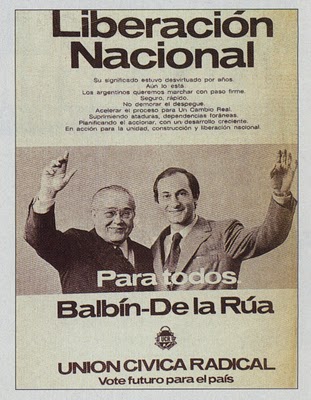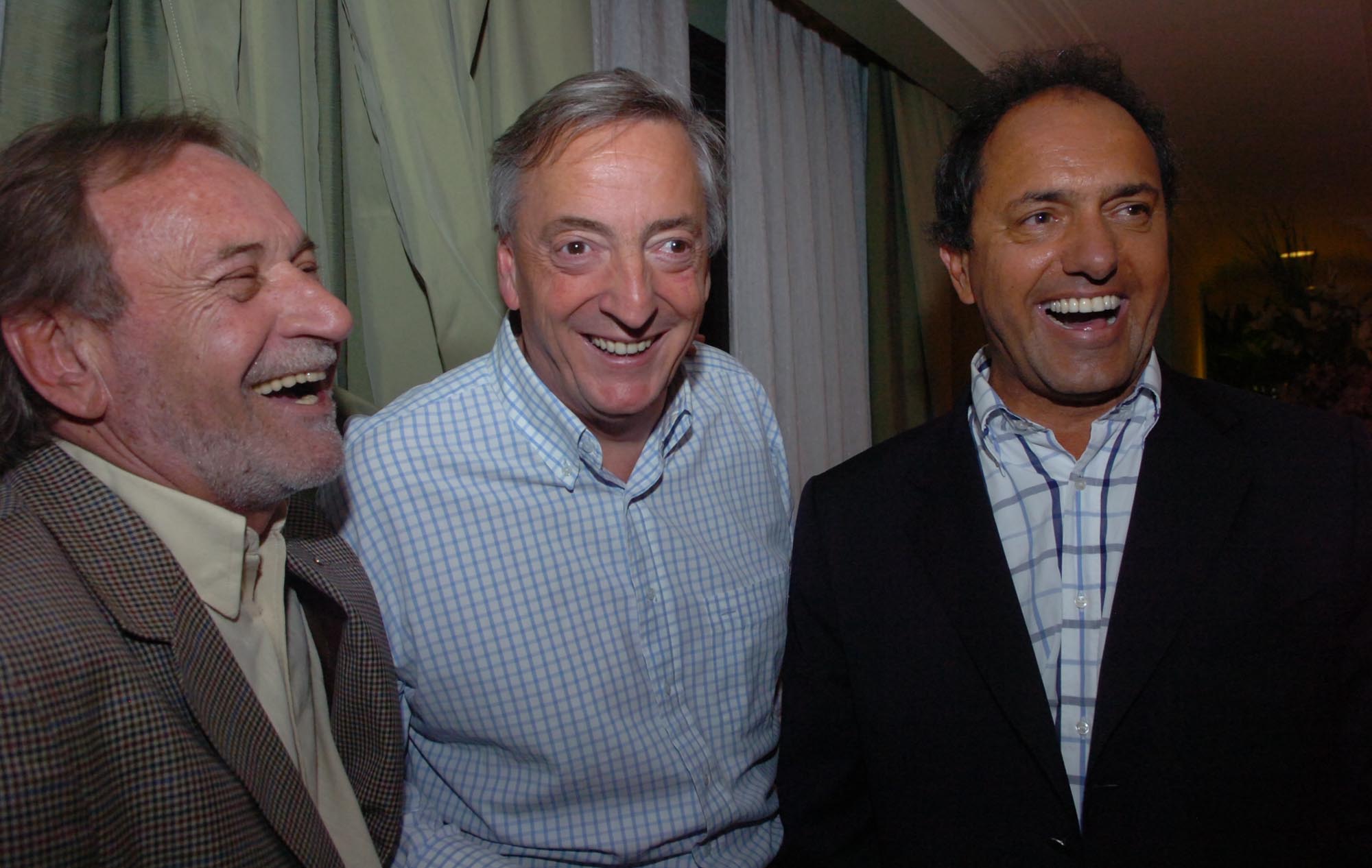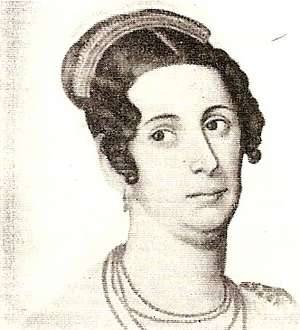|
Death And State Funeral Of Raúl Alfonsín
Raúl Alfonsín was the president of Argentina from 1983 to 1989. He died on March 31, 2009, aged 82. He had lung cancer and died at his home; a massive candlelight vigil took place in the vicinity of it. Vice President Julio Cobos, the acting president at the time, arranged three days of national mourning and a state funeral at the Palace of the Argentine National Congress. Alfonsín was seen by 40,000 people and the senior politicians of the country; people from other countries also voiced their respect for him. A military escort took his coffin to the La Recoleta Cemetery, and left him at the pantheon for the veterans of the Revolution of the Park. Health and death Alfonsín had lung cancer for almost a year before his death, which led to pneumonia. His medic Alejandro Sandler explained that his health had worsened at several points, which were followed by brief recoveries. In his last days he was visited by vice president Julio Cobos and monsignor Justo Laguna, who gave him t ... [...More Info...] [...Related Items...] OR: [Wikipedia] [Google] [Baidu] |
Palace Of The Argentine National Congress
The Palace of the Argentine National Congress ( es, Palacio del Congreso de la Nación Argentina, often referred locally as ''Palacio del Congreso'') is a monumental building, seat of the Argentine National Congress, located in the city of Buenos Aires. It is located in the ''barrio'' of Balvanera at its limit with Monserrat, an area informally known as the Congreso neighbourhood. Constructed between 1898 and 1906, the palace is a National Historic Landmark. The ''Kilometre Zero'' for all Argentine National Highways is marked on a milestone at the Congressional Plaza, next to the building. History The idea of a congressional palace was first proposed and decreed in 1895. Designed by the Italian architect Vittorio Meano and completed by Argentine architect Julio Dormal, the building was under construction between 1898 and 1906. Inaugurated that year, its aesthetic details were not completed until 1946. The quadriga atop the entrance is the work of sculptor Victor de Pol; Argent ... [...More Info...] [...Related Items...] OR: [Wikipedia] [Google] [Baidu] |
Felipe Solá
Felipe Solá (born 23 July 1950) is an Argentine agricultural engineer and politician. He previously served as Governor of Buenos Aires Province, from 2002 to 2007, and as Minister of Foreign Affairs and Worship under President Alberto Fernández, from 2019 to 2021. Solá was also Secretary of Agriculture during the presidency of Carlos Menem, and served as Vice Governor of Buenos Aires under Carlos Ruckauf until Ruckauf's resignation in 2002. From 2007 to 2019, he was a member of the Chamber of Deputies. Early life and personal life Felipe Solá was born in Buenos Aires and raised in the upscale Recoleta neighborhood. Solá graduated from the University of Buenos Aires as an agricultural engineer in 1981. Upon graduation Solá worked as a university professor, journalist, and economics counselor and researcher. He married María Teresa González in 1982, and they had two children; the couple were separated in 2003. He met María Elena Cháves in La Plata in 2004, and th ... [...More Info...] [...Related Items...] OR: [Wikipedia] [Google] [Baidu] |
Eduardo Duhalde
Eduardo Alberto Duhalde (; born 5 October 1941) is an Argentine Peronist politician who served as the interim President of Argentina from January 2002 to May 2003. He also served as Vice President and Governor of Buenos Aires in the 1990s. Born in Lomas de Zamora, he was elected for the local legislature and appointed ''intendente'' (mayor) in 1973. He was deposed during the 1976 Argentine coup d'état, and elected again when democracy was restored in 1983. He was elected vice-president of Argentina in 1989, under President Carlos Menem. Duhalde resigned as vice president and was elected Governor of Buenos Aires Province in 1991, and re-elected in 1995. He ran for president in 1999, being defeated by Fernando de la Rúa. De la Rúa resigned during the December 2001 riots, and Congress appointed the governor of San Luis Province Adolfo Rodríguez Saá as president. When Rodríguez Saá also resigned, Congress appointed Duhalde. During Duhalde's term in office, a huge currency ... [...More Info...] [...Related Items...] OR: [Wikipedia] [Google] [Baidu] |
Fernando De La Rúa
Fernando de la Rúa (15 September 19379 July 2019) was an Argentine politician and a member of the Radical Civic Union (UCR) political party who served as President of Argentina from 10 December 1999 to 21 December 2001. De la Rúa was born in Córdoba; he entered politics after graduating with a degree in law. He was elected senator in 1973 and unsuccessfully ran for the office of Vice President as Ricardo Balbín's running mate the same year. He was re-elected senator in 1983 and 1993, and as deputy in 1991. He unsuccessfully opposed the pact of Olivos between President Carlos Menem and party leader Raúl Alfonsín, which enabled the 1994 amendment of the Argentine Constitution and the re-election of Menem in 1995. De la Rúa was the first chief of government of Buenos Aires to be elected by popular vote, a change introduced by the amendment of the Constitution. He expanded the Buenos Aires Underground, adding new stations to Line D, starting the expansion of Line B, and est ... [...More Info...] [...Related Items...] OR: [Wikipedia] [Google] [Baidu] |
Carlos Menem
Carlos Saúl Menem (2 July 1930 – 14 February 2021) was an Argentine lawyer and politician who served as the President of Argentina from 1989 to 1999. Ideologically, he identified as a Peronist and supported economically liberal policies. He led Argentina as president during the 1990s and implemented a free market liberalization. He served as President of the Justicialist Party for thirteen years (from 1990 to 2001 and again from 2001 to 2003), and his political approach became known as Federal Peronism. Born in Anillaco to a Syrian family, Menem was raised as a Muslim,"Carlos Menem" ''Encyclopædia Britannica'' but later converted to to pursue a political career. Menem b ... [...More Info...] [...Related Items...] OR: [Wikipedia] [Google] [Baidu] |
Argentine National Anthem
The "Argentine National Anthem" ( es, Himno Nacional Argentino) is the national anthem of Argentina. Its lyrics were written by the Buenos Aires-born politician Vicente López y Planes and the music was composed by the Spanish musician Blas Parera. The work was adopted as the sole official song on 11 May 1813, three years after the May Revolution; 11 May is therefore now Anthem Day in Argentina. Some first, quite different, anthems were composed from 2022; a version was then introduced in 1813, which was used throughout the 19th century. What is now officially codified as the state's national anthem is shorter than the original composition and comprises only the first and last verses and the chorus of the 1813 "Patriotic March", omitting much emotional text about the struggle for independence from Spain ("with strong arms they tear to pieces the arrogant Iberian lion"). Etymology The third Argentine national anthem was originally named "" ( en, Patriotic March), later renamed ... [...More Info...] [...Related Items...] OR: [Wikipedia] [Google] [Baidu] |
Buenos Aires Province
Buenos Aires (), officially the Buenos Aires Province (''Provincia de Buenos Aires'' ), is the largest and most populous Argentine province. It takes its name from the city of Buenos Aires, the capital of the country, which used to be part of the province and the province's capital until it was federalized in 1880. Since then, in spite of bearing the same name, the province does not include Buenos Aires proper, though it does include all other parts of the Greater Buenos Aires metropolitan area. The capital of the province is the city of La Plata, founded in 1882. It is bordered by the provinces of Entre Ríos to the northeast, Santa Fe to the north, Córdoba to the northwest, La Pampa to the west, Río Negro to the south and west and the Autonomous City of Buenos Aires to the northeast. Uruguay is just across the Rio de la Plata to the northeast, and both are on the coast of the Atlantic Ocean to the east. Almost the entire province is part of the Pampas geographical regio ... [...More Info...] [...Related Items...] OR: [Wikipedia] [Google] [Baidu] |
Daniel Scioli
Daniel Osvaldo Scioli (, ; born 13 January 1957) is an Argentine politician, sportsman, and businessman. He was Vice President of Argentina from 2003 to 2007 and Governor of Buenos Aires Province from 2011 to 2015. From 2020 to 2022 he was Argentina's ambassador to Brazil. Since 2022, he has been the country's Minister of Production in the cabinet of Alberto Fernández. He has also served two tenures as president of the Justicialist Party. He was the candidate to the presidency for the Front for Victory ticket in the 2015 general elections, and lost to Mauricio Macri in a runoff election. Family Scioli was born in Villa Crespo, Buenos Aires. He spent his first years in a middle class home located at the corner of Corrientes and Humboldt. His grandfather ran an electrical hardware store, which over time grew into a store selling electrical appliances that was to become the family business. Scioli has described himself as a loyal man devoted to his stable and intimate circle, and ... [...More Info...] [...Related Items...] OR: [Wikipedia] [Google] [Baidu] |
Clarín (Argentine Newspaper)
''Clarín'' (, meaning "Bugle"), is the largest newspaper in Argentina and the second most circulated in the Spanish-speaking world. It was founded by Roberto Noble in 1945, published by the Clarín Group. For many years, its director was Ernestina Herrera de Noble, the founder's wife. ''Clarín'' is part of ''Periódicos Asociados Latinoamericanos'' (Latin American Newspaper Association), an organization of fourteen leading newspapers in South America. History ''Clarín'' was created by Roberto Noble, former minister of the Buenos Aires Province, on 28 August 1945. It was one of the first Argentine newspapers published in tabloid format. It became the highest sold Argentine newspaper in 1965, and the highest sold Spanish-speaking newspaper in 1985. It was also the first Argentine newspaper to sell a magazine with the Sunday edition, since 1967. In 1969, the news were split into several supplements by topic. In 1976, high color printing was benefited by the creation of Artes ... [...More Info...] [...Related Items...] OR: [Wikipedia] [Google] [Baidu] |
María Lorenza Barreneche
María Lorenza Barreneche Iriarte (July 3, 1926 – January 5, 2016) was an Argentine public figure and wife of the late President Raúl Alfonsín. She held the position of First Lady of Argentina from 1983 until 1989. Barreneche was born in 1926 in Chascomús, Buenos Aires Province, to Felipe Barreneche Echaide (1898-1984) and María Lorenza Iriarte Hospital (1898-1989). She was of Basque descent. She met her husband, Raúl Alfonsín, a law student who was also born in Chascomús, at a masquerade ball during the 1940s. The couple, who married in 1949, had six children: Raúl Felipe (b. 1949), Ana María (b. 1950), Ricardo (b. 1952), Marcela (b. 1953), María Inés (b. 1954), and Javier Ignacio (b. 1956). Barreneche, who disliked politics, focused on raising their children during her husband's political career. Former President Raúl Alfonsín died on March 31, 2009. Barreneche Iriarte was unable to attend his state funeral due to her own poor health. Barreneche had suffered fr ... [...More Info...] [...Related Items...] OR: [Wikipedia] [Google] [Baidu] |
First Lady Of Argentina
First Lady or First Gentleman of Argentina ( es, Primera dama o Primer caballero de Argentina), also known as First Lady or First Gentleman of the Argentine Nation ( es, Primera dama o Primer caballero de la Nación Argentina), is the unofficial and protocol title of the spouse of the sitting president of Argentina. Role The first lady or first gentleman is not an elected position, carries no official duties and brings no salary. Nonetheless, he or she participates in humanitarian and charitable work. Furthermore, many have taken an active role in campaigning for the president with whom they are associated. Some facts about the first ladies and gentlemen of Argentina: * Juana del Pino y Vera Mujica, whom born in Uruguay and Regina Pacini, whom born in Portugal are the only two First Ladies of Argentina who were born in a foreign country. *Eva Perón (1919–1952), First Lady from 1946 until her death, was the most important and influential First Lady, known for her work in m ... [...More Info...] [...Related Items...] OR: [Wikipedia] [Google] [Baidu] |
José Pampuro
José Juan Bautista Pampuro (28 December 1949 – 21 January 2021) was an Argentine politician. He was a member of the Justicialist Party, a Defense Minister and a senator for Buenos Aires Province. From 2006 to 2011 he served as the Provisional President of the Senate. Political career Pampuro entered public service in 1983, when he was named Public Health Secretary to the Mayor of Lanús, Manuel Quindimil. He was elected to the Lower House of Congress on the populist Justicialist Party ticket in 1987, and was named Minister of Health and Social Policy for Buenos Aires Province by newly elected Governor Eduardo Duhalde in 1991. He was named director of the Buenos Aires Provincial Office (each Argentine province maintains one in the nation's capital) in 1993, and remained in the post until being returned by voters to Congress in 1999. Eduardo Duhalde, appointed President of Argentina by Congress during a crisis in 2002, named Pampuro General Secretary of the Presidency, ... [...More Info...] [...Related Items...] OR: [Wikipedia] [Google] [Baidu] |









